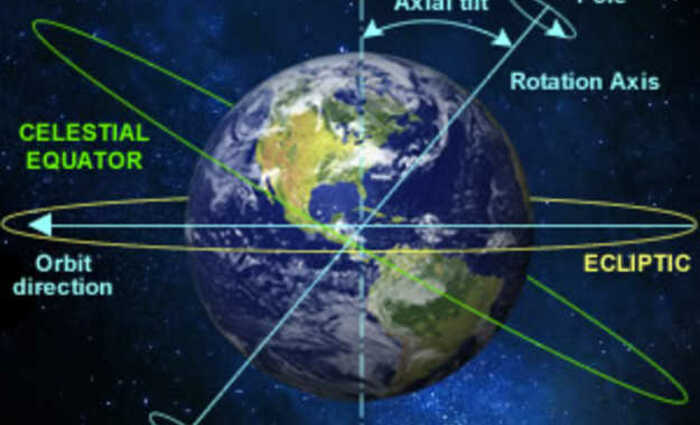
Equinoxes, Solstices, and Astrology
Learn all about the fresh-start feeling you get with each new season
Have you ever wondered about the meaning of an equinox or solstice and how they tie into Astrology? Not surprisingly, there’s a major significance to these periods of time and they each have something in common.
An equinox or solstice tells us about our relationship here on Earth to the Sun at any given season.
That’s right ... the first thing to remember about an equinox or solstice is that they mark the beginning of a new season. There are two equinox points each year (spring and autumn) and two solstice points (summer and winter). They each correspond to one of the four Cardinal signs of the zodiac -- also known as the Cardinal axis. This axis is extremely important in Astrology because it is where we find the powerful angles in a birth chart. These angles are points of energy manifestation. They are highly sensitive points in your chart that trigger every major life event. Each of these points on the Cardinal axis will correlate to one of the four cardinal directions (north, south, east, west).
Let’s dig into the astronomy and Astrology behind solstices and equinoxes so that you can understand more about their implication for our life and our planet!
Reveal how things will unfold for you during the next Equinox or Solstice »
The Summer and Winter Solstices
By definition, a solstice is an astronomical event that happens twice a year -- once at the beginning of winter and again at the start of summer. During a solstice, the Sun will reach its highest or lowest point relative to the celestial equator. The celestial equator is a fancy term for the giant imaginary circle that’s on the same plane as our equator. The word solstice literally means "Sun stands still," and that’s exactly what appears to happen during a solstice point from our perspective here on Earth.
During the Summer Solstice, the Sun will appear to stop and then begin declining in the slightest way each day in a southward direction. The date of the Summer Solstice marks the longest day of the year because at that point the Sun stops right over the Tropic of Cancer which is the northernmost point. After a few days, it will backtrack south towards the equator. The Solstice occurs around June 21 and astrologically, it coincides with the start of the Cardinal sign Cancer.
The Winter Solstice, on the other hand, occurs when the Sun appears to stand still at the southernmost point of the equator (the Tropic of Capricorn) and then slowly begins to trek north again. The Winter Solstice occurs around December 21 and marks the shortest day of the year. Astrologically, it coincides with the start of the Cardinal zodiac sign Capricorn. From a soul perspective, the Winter Solstice is about celebrating the rebirth of life in all forms. From here on out, the days will get longer and the Sun will shine brighter. Hope is renewed.
Reveal how things will unfold for you during the next Equinox or Solstice »
The Spring and Fall Equinoxes
In contrast, an equinox occurs when the tilt of the Earth’s axis is neither away from nor towards the Sun. At this time, the center of the Sun is in the plane of the Earth’s equator. What happens as a result is that the Sun is at one of two opposite points on the celestial sphere. The word equinox is translated in Latin to mean "equal night" because during an equinox the day and night will be at equal length.
The Spring Equinox begins around March 21 and marks the start of the new astrological year in the tropical zodiac since the Sun will enter Aries -- the first sign in the zodiac. This is typically a time of new beginnings and we have come to associate the Spring Equinox with a "fresh start."
The Fall Equinox occurs when the Sun reaches the opposite balancing point in its path through the tropical zodiac. Once again, the day and night are of about equal length during this time. This occurs around September 21 and correlates to the sign Libra. This time of year has become connected to "harvest" and reaping the fruits of our labor. At the same time, it brings up a certain respect for the fact that now, nights will become longer and it’s time to conserve energy and resources.
Reveal how things will unfold for you during the next Equinox or Solstice »
Cardinal signs bring life
An important point to note is that the seasonal relationship to solstices and equinoxes specifically applies to the Northern Hemisphere. Seasons in the Southern Hemisphere are reversed.
Either way, it’s no accident that the zodiac signs correlated to equinoxes and solstices are all Cardinal signs. Cardinal signs begin each season and are associated with qualities of initiative. Whether it’s an equinox or solstice, we’re celebrating the start of something new. Each season has a specific and essential job that we rely on for our very existence. The equinox and solstice points are sacred markers in time that help us connect the dots to the mystery behind the Earth’s never-ending circle of life.
Reveal how things will unfold for you during the next Equinox or Solstice »



